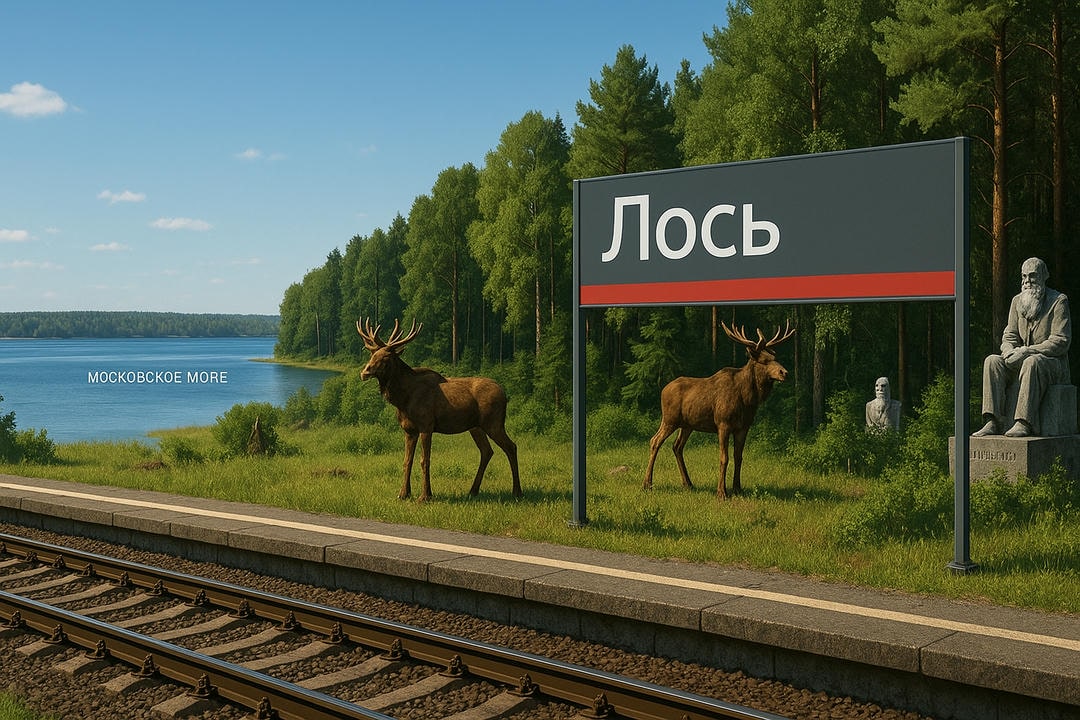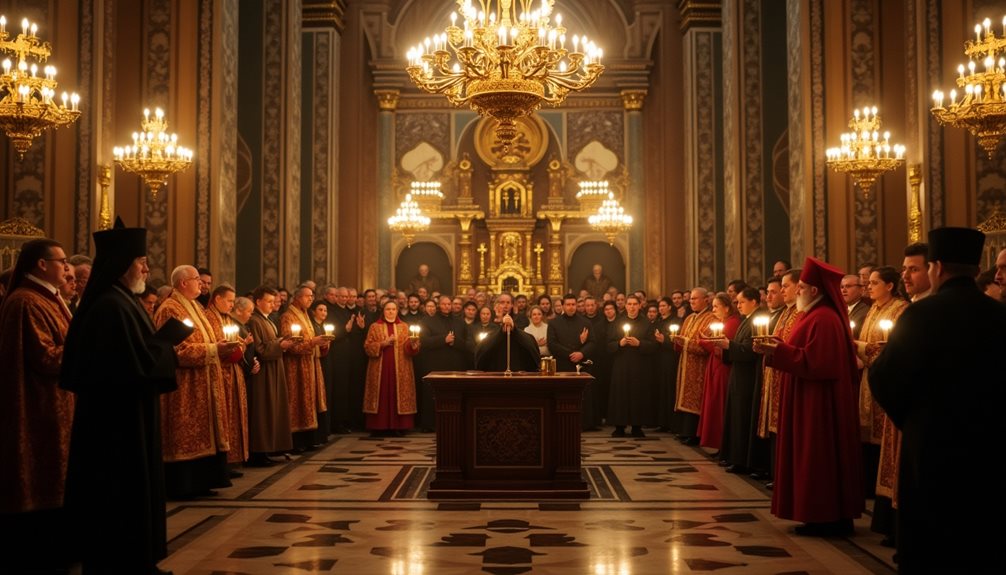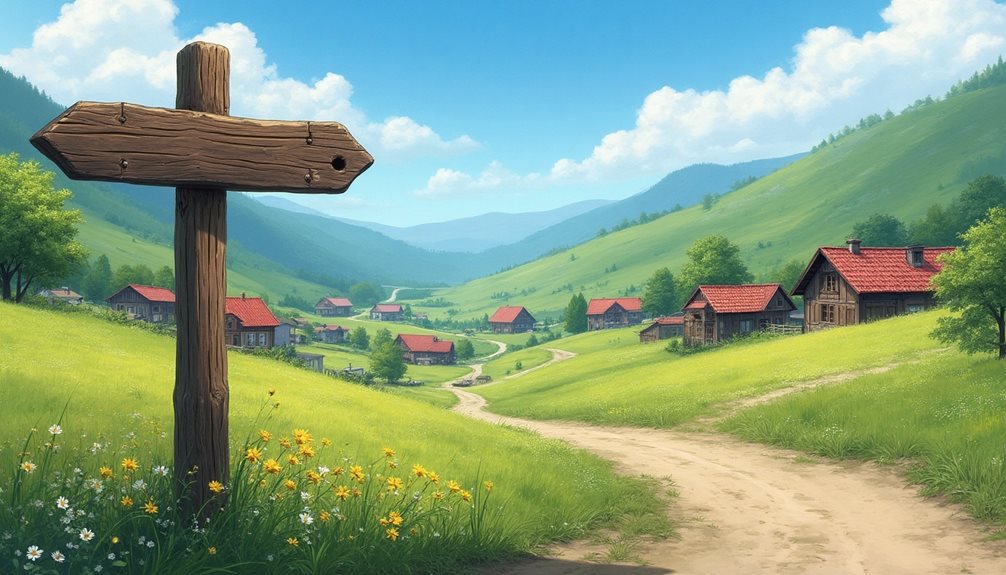Russia’s extensive railway network features some station names that catch the eye with their unexpected charm and character. Beyond simple markers for travel, these names reveal stories about local wildlife, natural landmarks, historical figures, and cultural traditions. Each name carries meaning, often with a lighthearted or intriguing twist, inviting travelers to uncover the rich heritage behind them.
Among these, a special group draws inspiration from the natural world surrounding the stations. This connection between place and name highlights not only geography but also Russia’s deep respect for its environment. Exploring these distinctive names offers a glimpse into the local culture and landscape, enriching the journey with both knowledge and curiosity.
Fascinating Names Inspired by Nature and Wildlife

Many Russian train stations have names deeply rooted in history and culture. However, there is a unique group of stations named after natural features and local wildlife, reflecting Russia’s vast and diverse environment.
For example, Moskovskoe More (Московское Море, [mas-KOV-sko-ye MO-rye], meaning “Moscow Sea”) and Obskoe More (Обское Море, [ob-SKO-ye MO-rye], meaning “Ob Sea”) are named after large reservoirs that resemble seas. Moskovskoe More is an artificial reservoir near Moscow, created for water supply and recreation, while Obskoe More is a large reservoir on the Ob River in Siberia. These names evoke a sense of nature’s grandeur and remind travelers of Russia’s extensive water resources.
Another interesting example is Los (Лось, [los’], meaning “elk” or “moose”). This station is named after the elk that inhabit Losiny Ostrov National Park near Moscow. Losiny Ostrov, which translates to “Elk Island,” is one of the largest urban forests in Europe and provides a protected habitat for these majestic animals. Naming a station after the elk draws attention to the importance of protecting wildlife and natural habitats.
These nature-inspired names not only connect travelers to the physical landscape but also carry cultural and ecological significance. They celebrate Russia’s rich biodiversity and promote awareness of conservation efforts. By using names linked to natural landmarks and species, the train stations serve as daily reminders of the country’s environmental heritage.
This tradition highlights Russia’s respect for its natural surroundings. It combines practical geography—helping travelers identify locations—with a deeper cultural identity tied to nature. As a result, the travel experience becomes more meaningful, blending transportation with education about the environment.
In summary, Russian train stations with names inspired by nature and wildlife offer more than just directions—they tell stories about the land, its creatures, and the need to preserve natural beauty for future generations.
Historical Figures Commemorated in Station Names

Naming train stations after historical figures in Russia is more than just a practical choice—it serves as a meaningful tribute to individuals who have significantly influenced the country’s history, culture, and identity. These station names act as living memorials, preserving the memory of these personalities and inviting travelers to connect with Russia’s rich past.
One prominent example is the Lev Tolstoy Station. Named after the world-famous Russian author Lev Tolstoy (Лев Толстой, [Lyef Tol-stoy]), this station honors the legacy of one of literature’s greatest giants. Tolstoy, born in 1828, is best known for his epic novels War and Peace and Anna Karenina, which explore deep philosophical themes and provide vivid portrayals of Russian society in the 19th century. The station often features museums or exhibits dedicated to Tolstoy’s life and works, turning a simple transit hub into a cultural site where visitors can learn about his contributions to literature and humanity.
Similarly, Yerofey Pavlovich Station commemorates Yerofei Khabarov (Ерофей Хабаров, [Ye-ro-fey Kha-ba-rov]), a 17th-century Russian explorer and Cossack. Khabarov is known for his expeditions in Siberia and the Russian Far East, where he played a crucial role in expanding Russia’s territorial reach across vast and difficult landscapes. This station’s name reminds travelers of the spirit of exploration and the historical efforts to map and settle remote regions of Russia.
Other stations named after historical figures include those honoring political leaders, scientists, and cultural icons, each reflecting a different aspect of Russia’s diverse heritage. For example, stations named after Peter the Great celebrate the tsar who modernized Russia in the early 18th century, while others may honor famous composers like Pyotr Ilyich Tchaikovsky, whose music remains globally influential.
By embedding these names into everyday infrastructure, Russia transforms routine travel into a subtle journey through its historical narrative. Passengers are not just moving from point A to B—they are passing through spaces charged with stories of creativity, courage, and discovery. These commemorations help keep the memory of these figures alive in public consciousness, bridging past and present in the flow of daily life.
In this way, Russian train stations serve as more than just transportation hubs; they become cultural landmarks that educate, inspire, and preserve national identity through the power of place names.
Unique Linguistic and Cultural Influences
Train station names across Russia provide a fascinating window into the country’s diverse linguistic and cultural heritage. They do more than identify locations—they tell stories about the people, languages, environments, and traditions that shape each region.
For example, some station names come from indigenous languages, offering important reminders of the original inhabitants of these lands. The station Lyalya (Ляля, [Lya-lya]) derives from the Mansi language, spoken by the Mansi people, one of the indigenous groups in Western Siberia. The Mansi language belongs to the Ugric branch of the Uralic language family. Such names preserve linguistic traditions that might otherwise be forgotten, maintaining a connection to the region’s original cultural roots.
Similarly, Shuba (Шуба, [Shoo-ba]) traces its origins to Samoyedic languages, spoken by indigenous peoples of northern Russia, including the Nenets and Enets. The word “Shuba” itself means “fur coat” in Russian, but in this context, it reflects local cultural elements linked to the Samoyedic peoples’ lifestyle and environment, where fur clothing was essential for harsh Arctic conditions.
Other station names reflect the natural environment or local wildlife. For instance, Los (Лось, [Los’]) means “elk” or “moose” in Russian. Naming a station after an animal highlights the importance of local fauna to the community, whether in terms of hunting traditions, symbolism, or simply geographical identity.
Stations like Dno (Дно, [Dno])—which translates as “bottom” or “depth” in Russian—often describe geographical features such as riverbeds or lowlands. These names anchor the station in the physical landscape, emphasizing how natural surroundings shape human settlements and cultural life.
Through their etymology and meanings, these station names serve as living markers preserving indigenous languages and reflecting the environmental and cultural identity of their regions. They connect travelers not only to places but also to the unique histories and traditions embedded in Russia’s vast territories.
This rich interplay between language, culture, and geography reveals how place names capture complex stories. They remind us that every station is part of a broader narrative, where language reflects both the natural world and human experience over centuries. Traveling through Russia by train thus becomes a journey through layers of cultural and linguistic diversity that continue to shape the nation today.
Playful and Humorous Station Name Origins
Many Russian train stations have names that reveal local humor, wit, and cultural quirks. These playful names add character to the travel experience and offer a glimpse into the stories, jokes, and traditions of the surrounding communities.
Take the station Shuba (Шуба, [Shoo-ba]), which literally means “fur coat” in Russian. This name humorously references the harsh winters common in many parts of Russia, where a warm fur coat is not just a fashion item but a necessity for survival. The name brings a smile to travelers, reminding them of the tough climate and the local way of coping with it—through warmth and resilience.
Another interesting example is Panki (Паньки, [Pan-kee]). The name traces back to petty lords in Russian history often called “pans” (пан), a term borrowed from Polish nobility titles. Locals jokingly used “Panki” to refer to these small-time landlords in a lighthearted way, giving the station name a playful historical twist. This shows how social history and humor combine in place naming to reflect local attitudes and stories.
The station Lyalya (Ляля, [Lya-lya]) sounds cute and friendly, but its origin is surprising. In the Mansi language, the word can mean “opponent” or “enemy.” This contrast between the gentle-sounding name and its tougher meaning adds an unexpected layer of cultural depth. It also illustrates how names can carry different meanings in various languages, sometimes creating amusing or ironic effects.
These playful and humorous names enrich the journey by revealing local character and storytelling. They show how language, history, and culture intermingle in everyday places like train stations, turning them into small cultural landmarks filled with charm and personality. Through these names, travelers get a sense of the humor and spirit that shape life in Russia’s diverse regions.
Geographic Features Reflected in Station Names
Many Russian train stations are named after local geographic features, providing travelers with vivid clues about the natural landscape surrounding each location. These names act as natural signposts, helping passengers connect with the environment as they journey across the vast country.
For example, stations like Moskovskoe More (Московское Море, [Mos-kov-sko-ye Mo-rye]) and Obskoe More (Обское Море, [Ob-sko-ye Mo-rye]) refer to large bodies of water. The word “More” means “sea” or “large lake” in Russian. These names evoke the image of vast reservoirs or lakes important to the local geography. For instance, Obskoe More is actually a reservoir on the Ob River, one of Siberia’s major rivers. Naming stations after these water features highlights their significance to the region’s landscape and economy.
The station Los (Лось, [Los’]) is named after the nearby Elk Island National Park (known in Russian as Losiny Ostrov). This protected area is famous for its dense forests and elk population. By naming the station Los, the connection to this rich natural habitat is emphasized, reminding travelers of the wildlife and greenery that characterize the region.
Another example is Dno (Дно, [Dno]), which literally means “bottom” or “depth” in Russian. This name often refers to low-lying or swampy terrain, directly describing the physical geography of the area. Such names help travelers visualize the land features around them, making the station more than just a stop but a marker of the local environment.
Through these geographic names, Russian train stations become linguistic markers that connect people with nature. They reveal the diversity of Russia’s landscapes—from vast reservoirs and forests to wetlands—through simple but evocative titles. This makes travel not only a movement through space but also an opportunity to appreciate the natural beauty and variety of the country’s geography.
Journey Through Names: Where Every Station Tells a Story
Russian train stations are much more than mere points on a map; they serve as storytellers of the land, culture, history, and nature surrounding them. From names inspired by majestic wildlife and vast natural landmarks to those honoring towering historical figures and preserving indigenous languages, each station invites travelers to step beyond the ordinary. Playful and humorous names add warmth and personality, while geographic titles root us firmly in the country’s diverse landscapes.
As you travel across Russia’s expansive rail network, these names enrich the journey, turning every stop into a chance to discover layers of meaning and heritage. They remind us that behind every name lies a story waiting to be uncovered—a story of people, places, and traditions that continue to shape Russia today. So next time you board a train in Russia, listen closely; the stations are speaking, sharing the unique spirit of this vast and fascinating country.




